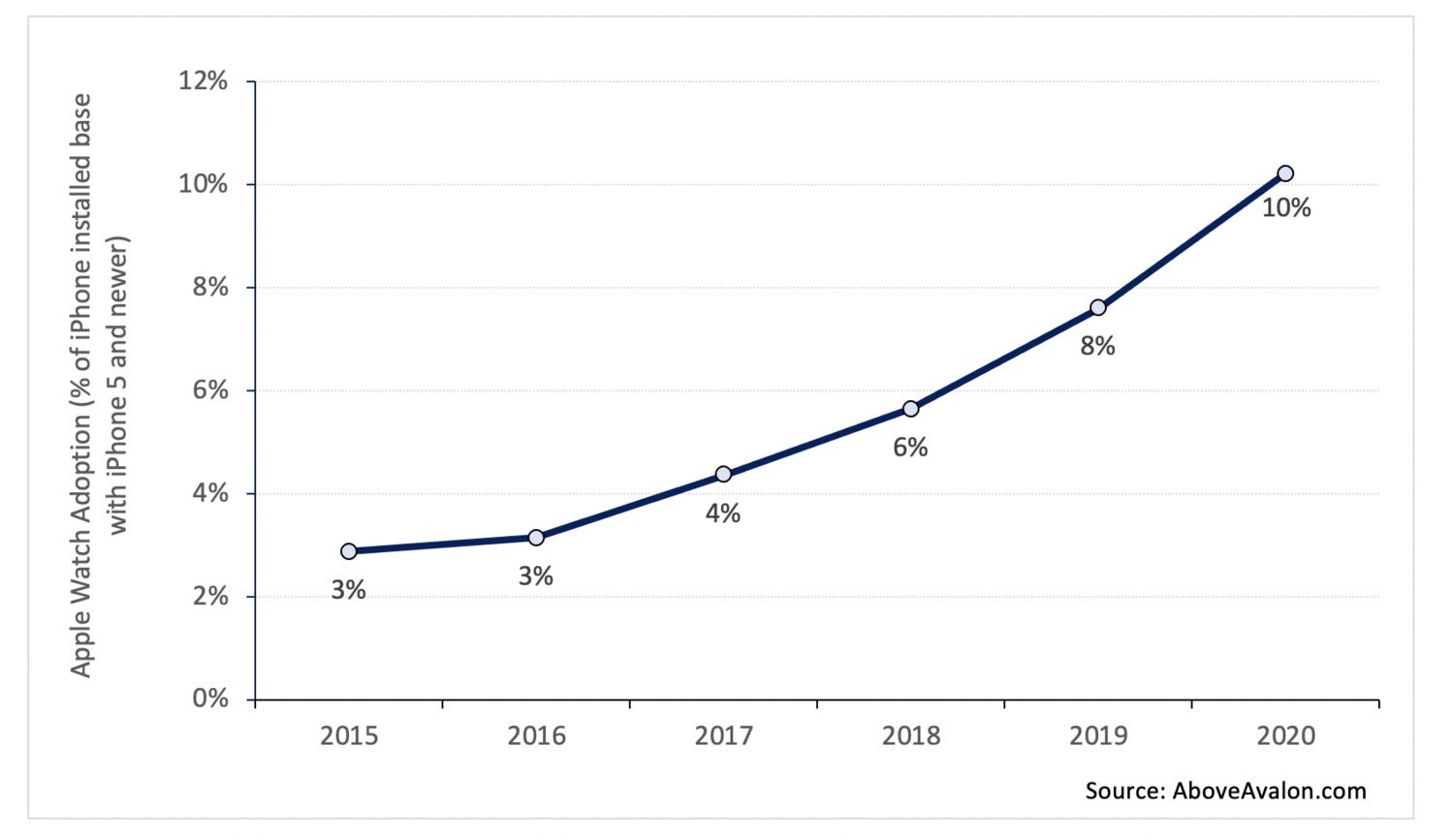Data shows that the Apple Watch has plenty of room to achieve more growth

The Apple Watch was first released on April 24th, 2015. According to Above Avalon, the latest data reveals that after more than five and a half years, the Apple Watch has an installed base of more than 102 million users with 30 million new wearers purchasing the device last year; that figure is more than the combined number of new Apple Watch owners added in 2015, 2016, and 2017. The report cites new services like Fitness+ for increasing the demand for Apple's timepiece. And by at least one figure, there is plenty of room left for many more new Apple Watch buyers to join the club.
The Apple Watch installed base has much more room to grow
As owners of the wearable know, an iPhone is needed to set up an Apple Watch. The recently added Family Setup feature allows a family member with an iPhone to set up a cellular-connected Apple Watch using the family members' Apple ID. This allows family members without an iPhone to enjoy a Cellular variant of the Apple Watch. Keeping in mind the importance of the iPhone in setting up an Apple Watch, there is some interesting data to be found in Above Avalon. A graph reveals that only 10% of the iPhone's world-wide installed base (iPhone 5 and newer) own an Apple Watch. This percentage has been growing nearly every year and has more than tripled since the smartwatch was first released in 2015. As Apple adds more features to the timepiece, we should see the percentage of the iPhone installed base (which is over 1 billion according to Apple CEO Tim Cook) with an Apple Watch continue to rise.

The installed base of the Apple Watch is over 100 million people
In the U.S., at the end of last year, 35% of iPhone users wear an Apple Watch. Should world-wide adoption rise to match the 35% of iPhone users that own an Apple Watch from the current 10%, the global installed base of the timepiece would be higher than 350 million people, 2.5x the current number. And should Apple open up the Apple Watch to non-iPhone users, the move would increase the potential market for the wearable by 2.5x. In the latter scenario, if 10% of all smartphone users globally purchase an Apple Watch, the number of people on the planet wearing the device would hit 350 million people.
This year's rumored new health feature for the Apple Watch could generate plenty of sales. The Series 7 version of the device is expected to include a non-invasive blood glucose monitor. Insulin dependent diabetics need to test their blood sugars at least three times a day to help them calculate the proper dosage of insulin to inject; take too little and the diabetes will ravage the user's organs over time. Take too much insulin and the user can pass out due to low blood sugar. To prevent these things from occurring, these diabetics prick themselves to draw blood which is put on a test strip and measured using a glucometer. This is a painful and expensive procedure that must be done three times a day or more.

The percentage of iPhone users wearing an Apple Watch continues to rise
But if the rumors are legit, Apple has devised a non-invasive way for the Apple Watch to test a user's blood and show his or hers' current blood sugar measurement. Purchasing an Apple Watch with the blood sugar feature would be a one time expense that would pay for itself quickly.
The Apple Watch has the fourth largest installed base among Apple devices trailing the iPhone, iPad and the Mac. At the current rate, the Apple Watch will move up to number three and surpass the Mac sometime in 2022. Above Avalon says that it might take years, but the Apple Watch installed base will eventually top that of the iPad.
Besides having a number of useful features available from the user's wrist, Above Avalon also notes that people want to be seen wearing the Apple Watch as it has a "cool factor." And its seamless connection to the Apple ecosystem also gives the device plenty of appeal.
Follow us on Google News









![A new Android bug is making it impossible to install new apps. Are you affected? [UPDATE]](https://m-cdn.phonearena.com/images/article/176703-wide-two_350/A-new-Android-bug-is-making-it-impossible-to-install-new-apps.-Are-you-affected-UPDATE.webp)

Things that are NOT allowed:
To help keep our community safe and free from spam, we apply temporary limits to newly created accounts: